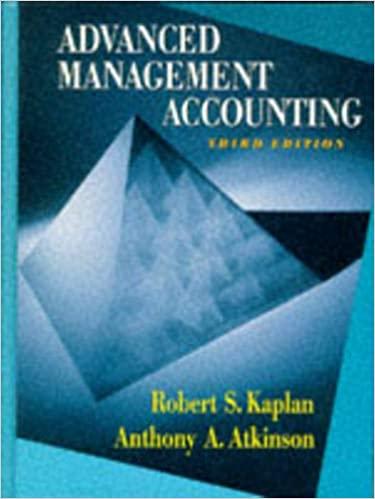Question
You are the assistant to Ron Michaels, the budget director for Alpine, Inc. It is December 2017 and you just met with him to discuss
You are the assistant to Ron Michaels, the budget director for Alpine, Inc. It is December 2017 and you just met with him to discuss the capital budget for 2018. Ron indicated that Alpines CFO restricted the total amount for investment in capital projects in 2018 to $20 million. In 2018, Alpine can invest in the three mutually exclusive and indivisible projects reported in the following table:
| Project | Investment required | IRR |
| A | 14.5 million | 8.20% |
| B | 4.5 million | 8.00% |
| C | 8.0million | 7.50% |
Alpines former budget director had used an arbitrary fixed discount (or required) rate to evaluate the firms capital budgeting projects. Unfortunately, this led to some bad calls and, eventually, the replacement of the former budget director. On the other hand, Ron believes that the Weighted Average Cost of Capital (WACC) should be used to evaluate capital budgeting projects.
Presently, Alpine has 150,000 bonds outstanding each having ten years to maturity, six percent annual yield to maturity, five percent annual coupon rate (interest is paid semi-annually), and $1,000 par value.
Alpine also has one million shares of preferred stock outstanding each having $100 par value, paying seven percent preferred dividend annually, and selling at par.
Alpine sold 20 million shares of common stock when it went public on January 2, 2007; no new shares have been sold to the public since then. Currently each of these shares is selling for $10. Alpine has a policy of paying 60 percent of its net income as dividends to its common stock; this dividend policy is not expected to change in the future. The firms earnings per share of common stock were $0.400 in 2007, have grown at a constant rate since then, and are expected to be $0.864 in 2017. However, the consensus of the analysts following Alpines stock is that growth will subside after 2017 to half of that realized over the 2007 to 2017 period.
In the meeting you asked Ron how Alpine will raise the money needed for its capital budget. Ron indicated that the money will be raised from Alpines 2017 retained earnings and from the sale of new bonds, preferred stocks, and common stocks. Regarding the sale of new securities, Ron explained that he considers Alpines current capital structure to be optimal. Hence, Ron recommended that new securities be sold in a way that does not change the market value weights of debt, preferred stock, and common equity in Alpines current capital structure.
Alpines investment banker has informed Ron that there will be no flotation costs for any amount of new bonds up to $3 million the firm decides to sell; however, flotation costs will be eight percent of the bonds selling price if the firm sells new bonds in excess of $3 million. Similarly, flotation costs will be nine percent of the selling price of new preferred stock up to $2.5 million, while they will be 10 percent of the selling price on any amount of new preferred stock in excess of $2.5 million. Finally, if the firm decides to sell new stocks the investment banker will charge flotation costs equal to 12% of the stocks selling price for an amount of new common equity up to $9 million and 20% of the stocks selling price for any new common equity amount in excess of $9 million. The investment banker assured Ron that new bonds, preferred stocks, and common stocks will have the same characteristics and sell at the same market prices as Alpines currently outstanding bonds, preferred stocks, and common stocks. Alpines tax rate is 35%.
To prepare for his meeting with Alpines CFO, Ron wants you to:
Determine the market value weights of debt, preferred stocks, and common stocks in Alpines current capital structure;
Develop Alpines Marginal Cost of Capital (MCC) schedule Ron expects you to determine all the breaks in the MCC schedule and find out how the MCC increases as the firm raises more new capital;
Plot the Investment Opportunity schedule (IOS) and the MCC schedule in the same graph and explain the meaning of that graph;
Determine in which of the three projects Alpine should invest;
Calculate how much of the needed investment money should be raised with retained earnings, new common equity, new preferred equity, and new debt, respectively. After his meeting, Ron conveyed to you some additional information provided by the CFO. Specifically, Alpine just learned that its last appeal was turned down and in 2018 will have to pay $2 million to settle a lawsuit. To meet this payment, the CFO has decided to further reduce the total amount for investment in capital projects in 2018 from $20 million to $18 million. Given this new development, Ron asked you to: Determine in which of the three projects Alpine should invest; Calculate how much of the needed investment money should be raised with retained earnings, new common equity, new preferred equity, and new debt, respectively
Step by Step Solution
There are 3 Steps involved in it
Step: 1

Get Instant Access to Expert-Tailored Solutions
See step-by-step solutions with expert insights and AI powered tools for academic success
Step: 2

Step: 3

Ace Your Homework with AI
Get the answers you need in no time with our AI-driven, step-by-step assistance
Get Started


